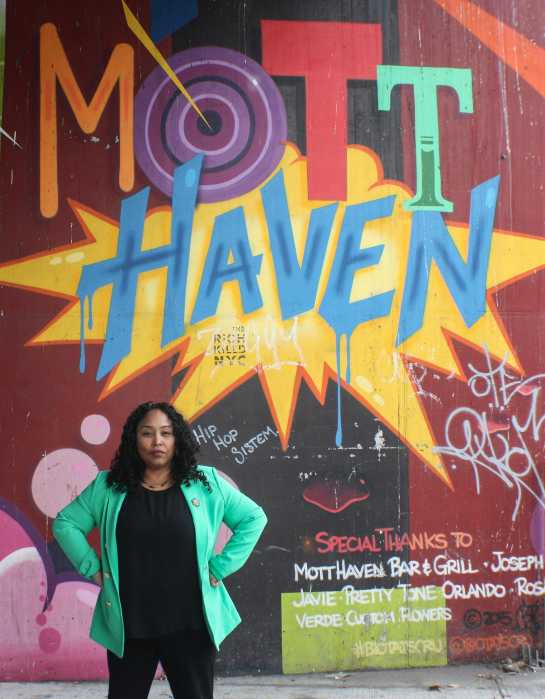By Gabriel Zucker
In another step toward creating a new public middle school at 75 Morton St., Deputy Mayor Dennis Walcott reported that the Department of Education has spoken with the Empire State Development Corporation to retract the request for proposals the state agency issued last week. At the same time, however, local elected officials warned that those talks might be reaching a dead end, and that the R.F.P. is likely to remain as is.
Walcott said, if E.S.D.C. does not retract the R.F.P. altogether, he would ask them to ensure that a middle school is part of the winning bidder’s plans.
Walcott reported the progress at a meeting with D.O.E. convened on Monday morning by Congressmember Carolyn Maloney, to discuss the epidemic of school overcrowding that is threatening School District 2. Walcott said he called E.S.D.C. within 24 hours of a meeting convened two weeks ago by Assemblymember Deborah Glick.
Glick said yesterday that she felt E.S.D.C. was “not co-operating,” but that “we have pressed” for it, and “if D.O.E. wanted to focus on this, they certainly have the personnel to do so.”
The R.F.P., which was published in the Wall Street Journal last Monday, has a quick deadline of Aug. 13, leaving the city little time to negotiate with E.S.D.C. Lisa Willner, E.S.D.C. communications director, maintained, however, that the deadline provided “adequate time” for negotiations to occur.
Maloney said there was “no guarantee” that 75 Morton St. would become a school.
“If it is a state office building, there is no reason why it can’t be a school,” she stated.
The meeting with D.O.E. was attended by Maloney, City Comptroller William Thompson, Borough President Scott Stringer, State Senators Liz Krueger and Tom Duane, State Assemblymembers Brian Kavanagh and Glick, City Council Speaker Christine Quinn, Councilmembers Rosie Mendez, Robert Jackson, Jessica Lappin and Daniel Garodnik and Public Advocate Betsy Gotbaum, along with community Board and other local representatives.
“I joked that we had more elected officials than the Democratic Convention,” said Maloney. “I was amazed at how many people showed up.”
The issue of school overcrowding has surged to the forefront in recent months, given the crisis the school system is in. Maloney got involved in the issue when elected officials and community leaders asked her to help them schedule a meeting with D.O.E., a feat that took three months.
Glick also suspected that the issue gained prominence when individuals who purchased expensive apartments in areas known for their public schools vocally complained to D.O.E. after learning that those schools might reject their children anyway.
“When you’re constantly called to task, you can’t be telling people that you won’t meet with them,” she said of D.O.E.
Maloney explained that the flurry of action is what happens “when it gets to the point where you can’t walk down the street or go to church without your constituents coming up to you and saying it’s overcrowded,” noting that two-thirds of schools in the district were above capacity.
“We’re in a crisis,” she said. “This is totally unacceptable. We have some of the most overcrowded schools in the whole system.”
Glick conceded that D.O.E. had some long-term proposals, but “in the interim, there’s a crunch, and they haven’t come to any particular solution.”
Maloney pointed out that only 5 percent of D.O.E.’s capital budget for school construction had been allocated to Manhattan, compared with 25 percent for the Bronx, 22 percent for Brooklyn, and 36 percent for Queens.
Lappin, chairperson of the City Council’s Land Use Subcommittee on Landmarks, Public Siting and Maritime Uses, plans to hold a hearing on that budget, according to Maloney.
“D.O.E. has come up with a blueprint, but it really has only short-term fixes and doesn’t address the systemic problems,” stressed Maloney. “The bottom line is we need new schools.”
D.O.E. promises that such new schools will open between 2009 and 2011, according to Glick, but, she said, “That doesn’t help us this September.” Glick also worried that the “significant increase in seats” would not be enough to make up for the area’s continuing population expansion.
“I can’t guarantee that that will be adequate three years hence,” she said of the planned new schools.
Others, however, were more optimistic coming out of the meeting.
“I am heartened by the fact that there could be two new schools in the pipeline,” said Brad Hoylman, Community Board 2 chairperson, referring optimistically to one at 75 Morton St. and the elementary school planned at the site of the current Foundling Hospital on W. 16th St. “I’m very hopeful that we are going to get these new schools. The question is how soon we can get them.”
A Quinn spokesperson said that the speaker felt there had been “very positive dialogue” at the meeting, and thought that acquiring 75 Morton St. was still a strong possibility.
If a middle school is indeed part of the plans for the 75 Morton St. property, D.O.E. will either create an entirely new institution there or will make the building the new home of Greenwich Village Middle School, which is currently at 117 percent capacity in the Public School 3 building. Under that plan, G.V.M.S. would more than double its current size, and P.S. 3 would grow as well.
Among other possible school sites discussed at the meeting was at the current Police Academy at E. 20th St., which may soon be vacated. The District 2 overcrowding problem also recently led to a plan to create three new high schools on Pier 40, as well as to the creation of an New York University Schools Exploratory Task Force, which will investigate the possibility of siting a public school on N.Y.U. property.
At press time, N.Y.U. had not responded to The Villager’s inquiries about the task force.
While D.O.E. may have been unresponsive in the past, Maloney had faith its record would improve now, given this meeting, and another one planned with Schools Commissioner Joel Klein in two weeks.
“I think that when you have the comptroller, the president of the Council, two assemblymembers, one congressperson, one senator and two councilmembers — I think they have to step up and listen,” she said.





































